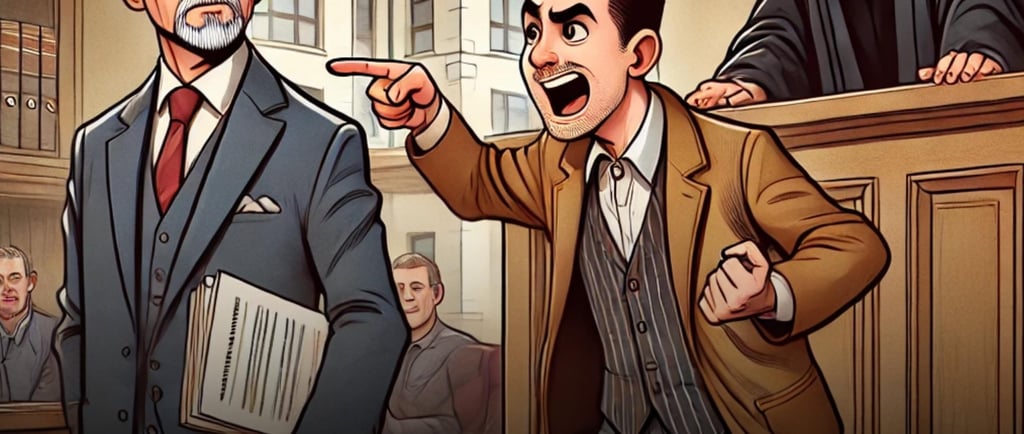Tenant Cannot Insist Landlord Vacate Another Property for Genuine Need
The Supreme Court recently reinforced the well-established legal principle that a landlord has the exclusive right to decide which of their rented properties should be vacated to meet their bona fide needs. The Court held that a tenant cannot challenge an eviction on the ground that the landlord owns other properties and should instead seek eviction from a different premises. This ruling was delivered in the case of Kanahaiya Lal Arya v. Md. Ehshan & Ors., where the bench, comprising Justices Pankaj Mithal and N Kotiswar Singh, overturned the decisions of the trial court and the High Court, which had previously dismissed the landlord’s suit for eviction.
2/27/20253 min read


The dispute arose when the appellant-landlord sought eviction of a tenant from a particular property, arguing that he required the premises to install an ultrasound machine for his two unemployed sons. The trial court initially rejected the landlord’s claim, and the High Court upheld this decision. The tenant contended that the landlord owned other properties and should have sought eviction from one of those instead. However, the Supreme Court ruled in favor of the landlord, emphasizing that once a bona fide need is established, a tenant cannot dictate which premises the landlord should reclaim.
Landlord’s Right to Choose Which Premises to Vacate
The Court reiterated that a landlord is the best judge of their own needs and has the right to choose which rented property should be vacated. It clarified that eviction on the grounds of bona fide need must stem from a genuine requirement rather than an arbitrary desire to recover possession. The ruling emphasized that once a landlord establishes a legitimate need for a particular property, the tenant cannot interfere by suggesting that another property be vacated instead.
In this case, the landlord specifically chose the disputed property for eviction because of its strategic location adjacent to a medical clinic and a pathology center, making it an ideal place to establish an ultrasound machine business. The Court observed that the landlord had a clear financial plan to invest in the business and that his two sons were unemployed. Therefore, the requirement was genuine and not merely a pretext to remove the tenant.
Rejection of the Tenant’s Arguments
The tenant’s main contention was that the landlord owned multiple properties and should have sought eviction from a different one instead of the one in dispute. The Supreme Court firmly rejected this argument, holding that a tenant cannot dictate which property a landlord should reclaim. The Court stressed that the decision lies solely with the landlord, provided that the need is bona fide and not motivated by an ulterior motive.
The Court further noted that the trial court and the High Court had erred in dismissing the eviction suit. Once the landlord had demonstrated that the premises in question were most suitable for his intended purpose, there was no legal ground for requiring him to seek eviction from another property. The Supreme Court clarified that courts should not second-guess a landlord’s choice unless there is evidence of bad faith or an attempt to misuse eviction laws.
Establishing Bona Fide Need
The Supreme Court also reiterated the principles governing eviction on the grounds of bona fide need. It emphasized that the need must be real and substantial, rather than a mere pretext for eviction. In this case, the landlord successfully proved that:
1. He had a clear and genuine need to establish an ultrasound business for his two unemployed sons.
2. The disputed premises were the most suitable for this business due to their proximity to a medical clinic and pathology center.
3. He had the financial capability to establish the business, making the claim legitimate.
Given these factors, the Court ruled that the bona fide need of the landlord was clearly established, and the tenant had no valid grounds to challenge the eviction.
Implications of the Judgment
This ruling sets a significant precedent for eviction cases based on bona fide need. It reinforces that:
• A landlord has the discretion to choose which property to reclaim for their personal or business needs.
• A tenant cannot resist eviction simply because the landlord owns other properties.
• Once bona fide need is proven, courts should not interfere in the landlord’s decision unless there is evidence of bad faith.
This judgment provides clarity on how courts should assess eviction cases, ensuring that tenants cannot misuse legal provisions to unjustly retain possession of rented properties.
Conclusion
The Supreme Court’s ruling in Kanahaiya Lal Arya v. Md. Ehshan & Ors. reaffirms the well-established legal principle that a landlord is the best judge of their own property needs. The decision makes it clear that once a landlord establishes a bona fide need, a tenant cannot dictate which property should be vacated. This judgment not only upholds the rights of landlords but also ensures that legal provisions for eviction based on genuine needs are not misused or interpreted unfairly. By reinforcing these principles, the Supreme Court has provided valuable guidance for future eviction disputes, maintaining a fair balance between the rights of landlords and tenants.o
